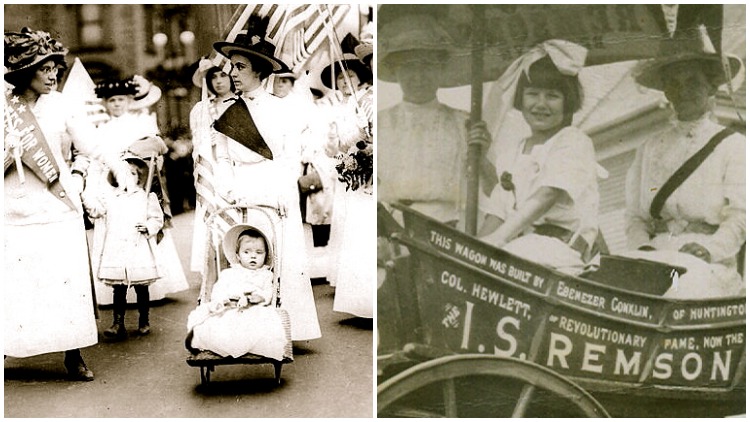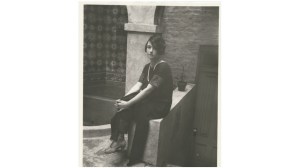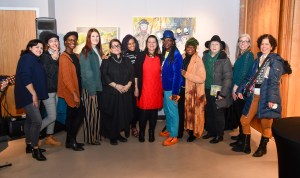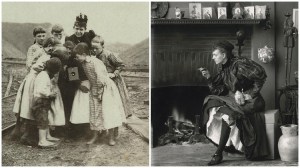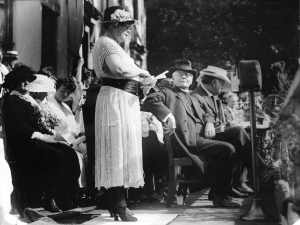In mid-1800s America, citizens were defined as male, not female; nonwhite men and freed slaves could vote, but women couldn’t; and married women could not own property in their own right or make legal contracts on their own behalf.
To protect her rights, Irene Corwin Davison never married, instead working to improve unfair working conditions for women and children, inadequate public health programs, and discriminatory education practices.
Tall and intelligent, Davison was a dedicated reformer, organizer, marcher, poll-watcher, canvasser, and generous member of the community. She instigated change using her plucky personality, her financial freedom — and a sturdy old wagon.
WHO WILL DARN OUR SOCKS?
Her father, Oliver Davison, an area pioneer, ran the grist- and saw mill he inherited. One of the few free entry ports, the “Near Rockaway” business prospered.
His daughter, Irene, was born in 1871. After completing college preparatory courses at Brooklyn’s Packer Collegiate Institute and graduating from Pratt Institute, she taught art in Jericho schools, and was one of the first women to open her own insurance agency.
Years earlier, New York State had been dubbed the “Cradle of the Women’s Movement” after the organized women’s rights convention in Seneca Falls in 1848. At the convention’s heart was the quest for suffrage: the right to vote in political elections. Their Declaration of Sentiments outlined rights that women citizens should have, by adding to the Declaration of Independence “all men and women are created equal.”
The opposition reacted: One newspaper even ran editorials asking who would darn socks if women got the vote.
During the Civil War, suffragists concentrated on abolishing slavery. By the late 1890s, they regrouped, joining the Progressives. With social services struggling with industrialization, urbanization, and European immigration, suffragists fought to open health clinics, outlaw child labor, and improve factory conditions.
A BIGGER CROWD
In 1902, in her early 30s, Davison joined women from East Rockaway’s oldest families to exchange books. Drawing strength from reading, by 1906, they had built the new East Rockaway Free Library. Davison and her two older sisters worked for suffrage, which was making headway.
In March 1913, the day before U.S. President-elect Woodrow Wilson’s inauguration, crowds were expected. But the Pennsylvania Avenue suffragists upstaged him.
“Where are the people?,” he reportedly asked, and was told, “On the Avenue watching the suffragists parade.”
Those 8,000 marchers called for a constitutional convention. Many were attacked by the mostly male spectators; police allegedly ignored the violence and 100 marchers were hospitalized. The event generated national attention and congressional hearings — but no legislation.
STILL, SHE PERSISTED
Several months later, Davison helped engineer a hugely successful publicity stunt. It was July 1, summer’s peak, when she left Manhattan, drawn by their horse “Suffragette” in a one-horse shay built in 1776. The wagon bore banners saying, “Votes for Women” and yellow knapsacks (the color of suffrage). Davison, then 42, rode with suffragist Edna Buckman Kearns, dressed in hot minutemen garb, and Kearns’ daughter, 8-year-old Serena.
They headed to Long Island for a month of speeches at meetings and rallies. Another “wagon woman,” Rosalie Jones of Cold Spring Harbor, often drove her yellow wagon next to them. They were among many activists crisscrossing the Island and major U.S. cities from 1913 to 1915.
The news-savvy Davison helped stage a September 1913 event that drew hundreds of women and men. For the Aerial Party encampment on the Hempstead Plains aviation field (now Roosevelt Field), 50 women slept in a hangar. Davison later worked as a poll watcher, asking Sayville voters to sign statements saying that the vote should be granted to New York women in 1915. The following year, Davison became president of the South Side Political Equality League of Lynbrook and East Rockaway. When her father died in 1916, the 45-year-old, considered an “old maid,” sold his farm to create one of the Island’s first housing developments.
DETERMINED AND DISTINGUISHED
In 1920, after decades of activism, women were granted the vote in national elections. The New York Times wrote that women succeeded “despite the fears of anti-suffragists that when a woman received the right to vote, ‘political gossip would cause her to neglect the home, forget to mend our clothes and burn the biscuits.’”
Davison continued educating women on the importance of voting. The League of Women Voters named her Nassau County outstanding suffragette and listed her name on a bronze plaque in Albany. She died on November 12, 1948, and was buried in Rockville Cemetery in Lynbrook.



